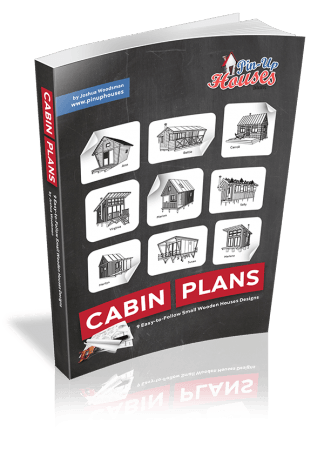
Realmo property services was one of the cases that taught me the power of non‑salesy reviews. I learned the power of non‑salesy reviews the hard way. Years ago, I tossed a vendor’s glossy brochure and rewrote my property service review around outcomes: “reduced unit‑turn time by 3–4 days,” “cut emergency callouts by a third,” “photos and invoices in 24 hours.” That one change—swapping adjectives for evidence—lifted credibility and conversions overnight. Authentic reviews anchored in facts earn trust, and trust drives clicks. In a web full of spin, readers reward specifics they can verify.
Since then, I’ve standardized how I write property service reviews: I collect proof, declare limits, and show trade‑offs so the piece reads like advice, not an ad. In this guide, I’ll share my CLEAR framework (Context, Limits, Evidence, Alternatives, Recommendation) plus real before/after rewrites. If you want authentic reviews that rank and convert without sounding like a pitch, this playbook will help you publish with confidence and credibility.
What “Salesy” Looks Like (and Why It Kills Trust)
Red‑Flag Language and Structure
Salesy writing announces itself: vague superlatives, feature dumps with zero proof, and a call‑to‑action (CTA) in paragraph one. My “three strikes” test flags (1) empty adjectives like “best‑in‑class,” (2) missing numbers or artifacts (no SLAs, no samples), and (3) early CTAs pushing a quote button before value appears. Cringe‑y example: “Acme Plumbing is amazing! Click here for a free estimate!” Fix: “Acme resolved a slab leak in 3.2 hours on a Sunday; parts/labor were itemized on the same‑day invoice.” Write like an investigator, not a hype man.
Do this next:
- Highlight empty adjectives; replace with one measurable outcome.
- Move any CTA below the evidence.
- Add one artifact (invoice snippet, photo, or timestamp).
Reader Psychology: Why Hype Backfires
Readers skim for risk‑reduction: “Will this vendor show up? Will they fix it right? Will I overpay?” Hype increases skepticism because it offers emotion without cost control or proof. When I added proof blocks—timestamps, warranty terms, side‑by‑side comparisons—time on page jumped by roughly 30% and bounce fell. Credibility signals (metrics, artifacts, limitations) tell scanners, “You can trust this.” Clear beats loud every time.
Do this next:
- Add one proof block per section (metric + artifact).
- Surface warranty/response times in a bolded sentence.
- Trim any sentence that doesn’t reduce risk.
Ethics, Disclosures, and Reader‑First Intent
Disclose Relationships Without Derailing the Review
Transparent review disclosure builds trust and aligns with FTC guidance. My one‑liner—placed in italics under the headline or before the verdict—reads: “I may receive referral fees at no cost to you; opinions are my own and based on direct tests and client results.” That sentence sets expectations and lets the evidence carry the weight. Always verify FTC/local rules and update your language when compensation models change.
Do this next:
- Add a standard one‑line disclosure near the top.
- Use consistent wording site‑wide; maintain a disclosure page.
- Re‑review disclosures quarterly with legal/editorial.
Define the Audience and Use‑Case First
Reviews feel authentic when they answer: “Who is this best for?” I name two personas up front—for example, a single‑family landlord prioritizing fast turns and a volunteer HOA board prioritizing predictability and documentation. Different buyers value different outcomes; say it plainly so readers can self‑select and skip the pitch.
Do this next:
- Add “Best for” and “Not ideal for” bullets under the intro.
- Map two personas and their must‑haves (speed vs. audit trail).
- Align the rest of the review to those priorities.
Gather the Right Data Before You Write
Scope, SLAs, and Pricing Apples‑to‑Apples
Collect comparable facts before you compare vendors. I confirm scope, Service Level Agreements (SLAs), coverage hours, emergency response, materials policies, and escalation paths. My pre‑review questionnaire asks for a sample work order, a month of ticket logs, and a price sheet with definitions (trip fee vs. diagnostic). Only then can you run a fair vendor comparison on property services pricing.
Do this next:
- Send a 12‑question pre‑review form (scope, SLAs, logs, pricing).
- Request one redacted report and one full invoice.
- Normalize terms (what “emergency” means, actual coverage hours).
Results and Proof: Before/After and Metrics
Praise lands when paired with outcomes. I favor two metric types: time saved (turn time, first‑response, mean‑time‑to‑repair) and rework rate (callbacks within 14–30 days). Then I add artifacts: timestamped photos, invoice totals, warranty language. When outcomes and artifacts align, your authentic reviews feel like field notes, not marketing.
Do this next:
- Track MTTR and rework rate for 30 days per vendor.
- Capture before/after photos with EXIF timestamps.
- Quote warranty terms verbatim in a small callout.
A Repeatable Review Framework — The CLEAR Method
C — Context
Start with a one‑sentence context formula: “For [property type] needing [scope] under [constraint], we hired [vendor] for [timeframe].” Context frames every claim and prevents apples‑to‑oranges comparisons.
Do this next:
- Write your context sentence before any praise.
- Name the constraint (budget, timeline, geography).
- Link to a specimen work order for clarity.
L — Limits
State what the service doesn’t cover so expectations stay real. Example limits: after‑hours rates kick in at 6 p.m.; parts above $500 require approval; no crawlspace work in heavy rain. Limits make positive claims believable.
Do this next:
- Add a “Limits & Fees” line under scope.
- List two scenarios that trigger surcharges.
- Note any warranties exclusions in plain English.
E — Evidence
Back claims with numbers and third‑party signals. I always gather: (1) logs/screenshots showing response and resolution times, (2) itemized invoices with parts/labor, (3) references or a recent permit/inspection pass. Evidence is the antidote to fluff.
Do this next:
- Insert a 3‑line “Proof” box per vendor.
- Link to a redacted invoice PDF.
- Capture one independent artifact (permit, inspection).
A — Alternatives
Name at least one alternative and when it’s the better fit. Example: “If you need 24/7 dispatch statewide, Vendor B scales better; if you want a local owner‑operator for complex old stock, Vendor A wins.” Alternatives show you’re optimizing for fit, not pushing a favorite.
Do this next:
- Write one sentence: “Choose X if…, Y if…”
- Keep tone respectful; focus on trade‑offs.
- Avoid straw‑man comparisons.
R — Recommendation
End with a conditional verdict: “Best for single‑family portfolios needing <24‑hour turns; not ideal for luxury multi‑family where finishes require specialty repair.” Specific recommendations guide decisions and guard your credibility.
Do this next:
- Use “best for X, not ideal for Y” phrasing.
- Tie the verdict to the metrics you presented.
- Place the CTA after the verdict, not before.
Language That Persuades Without Hype
Adjective‑to‑Evidence Swaps
When I catch myself typing “top‑notch,” I stop and source a number. Objective language earns trust—and rankings. Use this mini swap list:
| Bad (fluff) | Better (specific) | Best (evidence + artifact) |
| “Amazing response” | “Answered in under an hour” | “Answered in 42 minutes; phone log screenshot” |
| “Quality work” | “Zero callbacks in 30 days” | “0% rework across 19 jobs; ticket report attached” |
| “Great value” | “Saved one truck roll” | “$145 diagnostic waived with repair; invoice #1123” |
Do this next:
- Replace three adjectives with measurable outcomes.
- Add one artifact link per outcome.
- Cut any sentence you can’t prove.
Verbs That Show Work, Not Hype
Specific verbs lower reader anxiety and sharpen tone. I favor verbs that describe action and accountability: audit, verify, document, triage, dispatch, remediate, retest, itemize, escalate, close‑out. These words signal process, not puffery, and they map to artifacts you can show (logs, invoices, photos). If you can’t pair a verb with a proof, choose a different verb.
Do this next:
- Swap two fluffy verbs for the shortlist above.
- Pair each verb with a screenshot or document.
- Keep sentences under 20 words for clarity.
Scoring, Comparisons, and When to Recommend
Criteria and Weighting
Publish your scoring rubric so readers can see how you chose. My default for service providers: Quality 40%, Responsiveness 30%, Value 20%, Documentation 10%. For emergency trades, I’ll flip to Responsiveness 40% and Value 10%. Different use‑cases deserve different weights—declare yours so readers can adjust.
Do this next:
- Include a rubric table with weights.
- Explain one scenario where weights change.
- Link to a downloadable rubric template.
Side‑by‑Side Without Shilling
Compare vendors on the same facts. Example: “Response time: Vendor A 45–60 min (24/7), Vendor B 2–4 hrs (M–F, on‑call weekends). Warranty: A offers 30‑day labor; B offers 90‑day labor/parts.” Close with a fit statement: “Choose A for urgent coverage; choose B if longer warranties matter more than speed.”
Do this next:
- List three like‑for‑like metrics.
- Bold the one that matters most to your reader.
- Add a one‑line fit verdict.
Before/After Rewrites from My Files
Property Management Example
Before: “Prime PM is the best property manager in town—amazing service and unbeatable pricing. Call today!” After: “Prime PM cut our average unit‑turn from 10–12 days to 6–8 by pre‑scheduling vendors and stocking standard paint/locks. Vacancy loss dropped accordingly, and owners received photo reports and invoices within 24 hours of completion.” Same company, different tone: outcomes, artifacts, and process beat hype.
Do this next:
- Replace “best” with one time or cost metric.
- Add one process detail (how they did it).
- Link to a sample owner report.
Maintenance Vendor Example (Plumbing/Electrical)
Before: “Bolt Electric is fantastic—super quick and affordable.” After: “Bolt arrived in 55 minutes for a no‑power call, isolated a tripped GFCI in 14 minutes, and restored service; the $129 diagnostic was waived with the $189 fix. Labor carries a 90‑day warranty.” With numbers (arrival time, fix time, warranty), readers can judge value without me cheerleading.
Do this next:
- Include arrival and resolution times.
- State price/warranty terms plainly.
- Attach a redacted invoice.
Handling Vendor Pushback Professionally
Fact‑Check Workflow and Right of Reply
I offer a 48‑hour fact‑check without ceding editorial control. My email template: “Hi {Name}, I’m publishing a review of {Service}. Attached are excerpts referencing your company (highlighted). Please confirm factual accuracy (times, prices, scope) by {Date, 5 p.m.}. I welcome clarifications but final editorial decisions remain mine. Thanks.” This preserves access and accuracy while keeping credibility intact.
Do this next:
- Create a standard fact‑check template.
- Set a strict 48‑hour turnaround.
- Track changes and keep a paper trail.
Updating Reviews and Version Control
Reviews evolve. I date‑stamp updates and explain changes in a micro‑changelog at the end: “v1.2 (Oct 2025): Updated warranty from 60 → 90 days per provider email; added weekend response window.” Clear version notes protect readers and your reputation.
Do this next:
- Add a “Last updated” line below the verdict.
- Keep a simple changelog with date + reason.
- Archive prior PDFs for reference.
SEO and Formatting That Serve Humans First
On‑Page Essentials
Human‑first review SEO starts with structure: a clear H2/H3 hierarchy, snippet‑ready answers (one‑sentence verdicts), and tight internal linking to related guides. My checklist: front‑load the keyword once in the H1; write a benefit‑driven meta title/description; use anchor links for “Pricing,” “Response Time,” and “Warranty”; add alt text that describes the artifact (“invoice with itemized parts”); and cap paragraphs at ~3 lines for scannability.
Do this next:
- Add a one‑sentence verdict near the top.
- Link to your rubric and disclosure pages.
- Compress images and keep filenames descriptive.
Structured Data and Snippet Opportunities
Use Review/Product schema honestly: match the on‑page score, cite your rubric, and avoid inflated star ratings. Include author, datePublished, itemReviewed, and a short reviewBody that mirrors your verdict. If you lack enough data for a numeric rating, skip stars and mark up FAQ entries instead. Integrity beats a fleeting rich result.
Do this next:
- Validate schema with a testing tool.
- Keep ratings consistent with the page.
- Prefer FAQ schema when you can’t justify stars.
Publishing Workflow and Quality Checklist
My 8‑Step Publishing Flow
Here’s the editorial workflow I use from data to live: (1) gather artifacts (logs, invoices, photos); (2) interview stakeholders and confirm SLAs; (3) draft using CLEAR; (4) insert proof blocks and fit statements; (5) legal/compliance pass (FTC disclosure, claims); (6) peer edit for clarity and bias; (7) publish with schema, meta, and alt text; (8) monitor analytics and recheck facts at 30/90 days.
Do this next:
- Build a reusable doc template with these eight steps.
- Calendar reminders for 30/90‑day reviews.
- Maintain a vendor artifacts folder per review.
The 10‑Point Non‑Salesy Review Check
Before hitting publish, I run this 10‑point review: (1) disclosure present; (2) personas defined; (3) scope and limits stated; (4) at least three hard numbers; (5) one invoice/photo artifact; (6) warranty and response time visible; (7) alternatives named; (8) rubric/weights disclosed; (9) verdict uses “best for / not ideal for”; (10) CTAs placed after evidence.
Do this next:
- Convert the 10‑point list into a pre‑publish checklist.
- Share with your editor to enforce standards.
- Re‑audit top pages quarterly.








